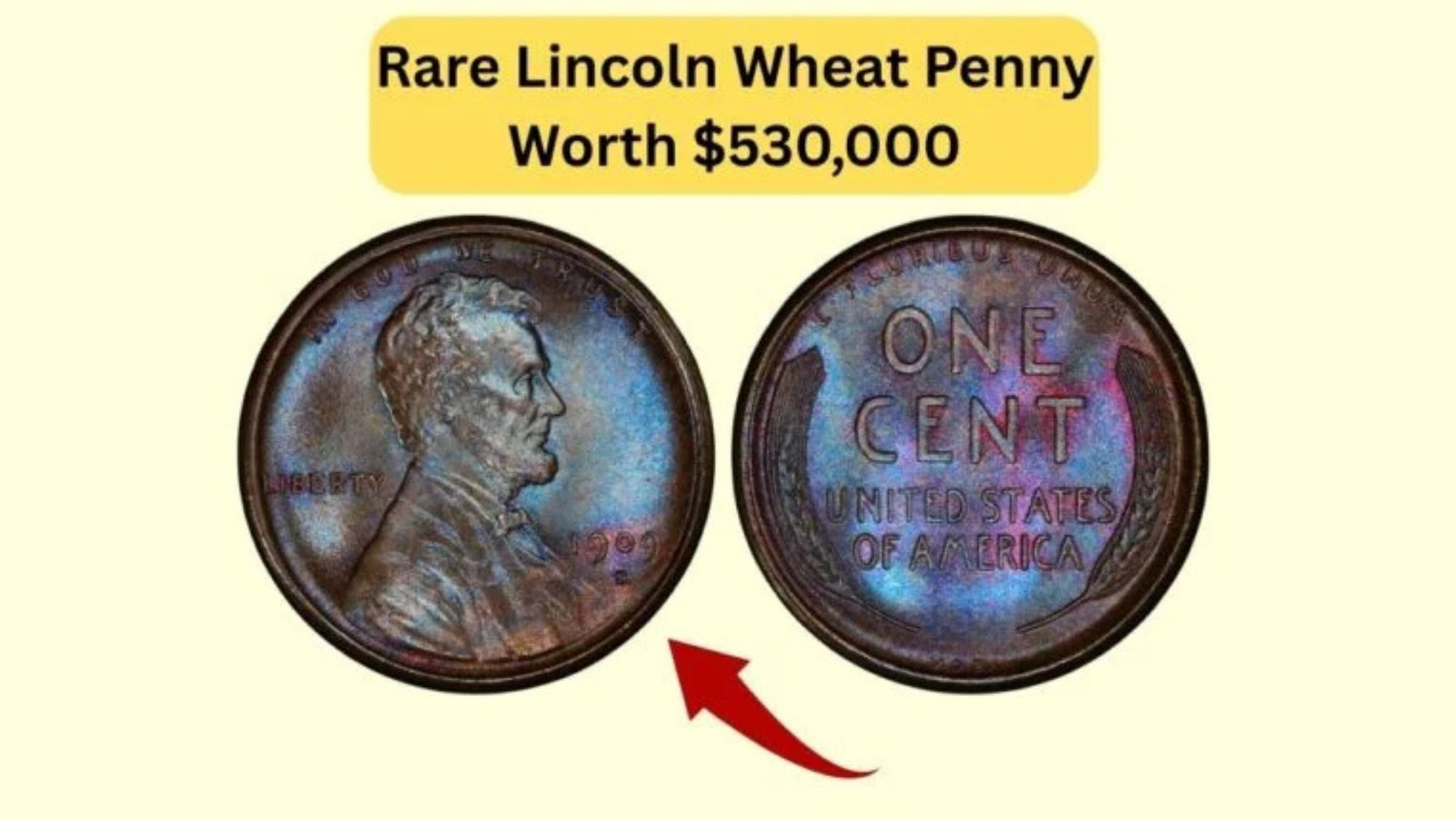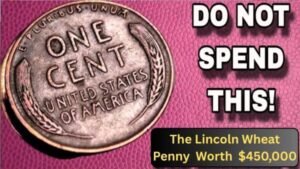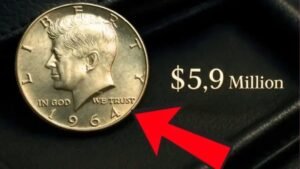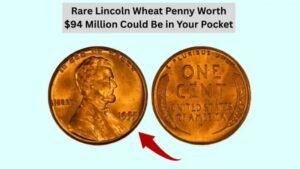Imagine finding a penny in your change that’s worth over half a million dollars! The Lincoln Wheat Penny, first minted in 1909, is a small coin with a big story. While most are worth just one cent, certain rare versions, like the 1914-D or 1955 Double Die, can fetch up to $530,000 at auction due to their scarcity or unique errors. In 2025, these coins are sparking a treasure hunt across America, as they’re still in circulation, possibly hiding in your wallet, coin jar, or loose change. This article explains in simple words how to spot these valuable pennies, their history, and how you can join the hunt. We’ve also included a table to clarify tricky terms, making it easy for everyone to understand.
What Is the Lincoln Wheat Penny?
The Lincoln Wheat Penny was introduced in 1909 to celebrate Abraham Lincoln’s 100th birthday. Designed by Victor David Brenner, it was the first U.S. coin to feature a president’s portrait. The front (obverse) shows Lincoln’s profile, while the back (reverse) has two wheat stalks framing “ONE CENT,” giving it the “Wheat Penny” name. Over 20 billion were minted from 1909 to 1958, making them common, but rare versions with specific dates, mint marks, or errors are worth a fortune.
Why Are Some Pennies So Valuable?
Certain Lincoln Wheat Pennies are prized due to low production numbers or minting mistakes. For example, the 1914-D penny, made in Denver, had a low mintage of just 1.2 million, and a top-condition one sold for $530,000 in 2022. The 1955 Double Die penny, with a blurry, doubled date and lettering, is another collector’s gem, valued up to $125,000-$500,000. These coins’ rarity, historical significance, and condition drive their high value.
Why the Excitement in 2025?
Stories of rare pennies fetching millions have ignited a coin-hunting frenzy in 2025. From a 1943 bronze penny sold for $1.7 million in 2010 to a 1955 Double Die found in change in 2024 valued at $125,000, these discoveries show valuable coins are still out there. With millions of Wheat Pennies in circulation, anyone could stumble across a treasure in everyday change, making 2025 a thrilling year to check your pennies.
Growing Coin Collecting Trend
Coin collecting is more popular than ever, with local shops reporting increased interest and auction houses buzzing with activity. Social media platforms like X are filled with stories of people finding rare coins, fueling the excitement. This trend encourages both collectors and casual folks to inspect their change, turning a simple penny into a potential life-changer.
Key Rare Lincoln Wheat Pennies to Look For
The 1914-D penny, minted in Denver, is one of the rarest due to its low production of 1.2 million. In pristine condition (graded MS65 or higher), it can fetch $530,000. Look for a “D” mint mark under the date and sharp details on Lincoln’s face or wheat stalks.
1955 Double Die Penny
The 1955 Double Die penny, struck in Philadelphia (no mint mark), has a noticeable error where the date and “LIBERTY” appear doubled or blurry. Only a small number were released, making them worth $125,000-$500,000 in good condition. This error occurred due to a misaligned minting die.
1943 Bronze Penny
During World War II, pennies were made of steel to save copper, but a few 1943 bronze pennies were minted by mistake. With only about 15-20 known to exist, one sold for $1.7 million in 2010, and experts estimate a pristine one could reach $7-$161 million. These have a coppery-brown color and don’t stick to a magnet.
1909-S VDB Penny
The 1909-S VDB penny, minted in San Francisco, is prized for its low mintage and the “VDB” initials (for designer Victor David Brenner) near the wheat stalks. These can sell for $100,000-$500,000 in top condition, especially if uncirculated.
How to Spot a Valuable Lincoln Wheat Penny
To find a rare penny, follow these steps:
- Check the Date and Mint Mark: Look for key years like 1909, 1914, 1943, or 1955. Mint marks (“S” for San Francisco, “D” for Denver, or no mark for Philadelphia) are below the date.
- Inspect for Errors: Use a magnifying glass to spot doubled text on 1955 pennies or a coppery color on 1943 pennies.
- Test with a Magnet: Steel pennies (common in 1943) stick to magnets; bronze ones don’t.
- Examine Condition: Coins with sharp details and no wear are worth more. Avoid cleaning, as it lowers value.
- Compare with Guides: Use online resources or coin books like the “Red Book” to match your penny to known rarities.
Tools You Need
- Magnifying Glass: To see small details like doubled text or “VDB” initials.
- Magnet: To test 1943 pennies (bronze won’t stick).
- Coin Holder: To store potential finds safely without scratching.
- Coin Guide: Books or websites like PCGS or NGC for reference images.
Where to Find These Pennies
Everyday Places
Rare Wheat Pennies are still in circulation, hiding in:
- Pocket Change: Check coins from stores, vending machines, or cash transactions.
- Coin Jars: Dig through old jars or family collections at home.
- Bank Rolls: Exchange cash for rolls of pennies at banks to search through.
- Flea Markets or Garage Sales: Older coins often appear in secondhand lots.
- Inherited Collections: Ask relatives about old coins they might have saved.
Real-Life Finds
Stories of lucky discoveries keep the hunt alive. A teenager found a 1943 bronze penny in his lunch money in 1947, later valued at millions. In 2024, a 1955 Double Die penny was found in change, fetching $125,000 after grading. These tales show valuable pennies can turn up anywhere.
How to Cash In on a Rare Penny
Getting It Verified
If you think you’ve found a valuable penny:
- Don’t Clean It: Cleaning can ruin its value by scratching the surface.
- Visit a Coin Dealer: Local shops can appraise your coin and confirm its authenticity.
- Professional Grading: Send it to services like PCGS (Professional Coin Grading Service) or NGC (Numismatic Guaranty Corporation) for an official grade (costs $20-$100). A high grade, like MS65, boosts value.
Selling Options
- Local Coin Shops: Quick appraisals but may offer lower prices.
- Online Auctions: Platforms like eBay connect you with collectors, though fees apply.
- Major Auction Houses: Heritage Auctions or Sotheby’s handle high-value coins, like the $530,000 1914-D penny.
- Coin Shows: Meet dealers and collectors in person for direct sales.
Avoiding Scams
Be cautious of fakes, like copper-plated steel pennies or altered dates. Work with reputable dealers, check their reviews, and get a second opinion for high-value coins. Store your penny in a soft cloth or plastic holder to prevent damage.
Complex Terms Explained in Simple English
| Complex Term | Simple Meaning (English) |
|---|---|
| Lincoln Wheat Penny | A penny from 1909-1958 with Lincoln’s face and wheat stalks on the back |
| Minting Error | A mistake during coin production, like doubled text or wrong metal |
| Double Die | A coin with blurry or doubled text/design due to a minting mistake |
| Mint Mark | A small letter (S, D, or none) showing where the coin was made |
| Bronze Planchet | A coin made with copper instead of steel by mistake |
| Uncirculated | A coin in perfect condition, never used in transactions |
| Grading Service | A company that checks a coin’s authenticity and condition |
Why This Matters in 2025
Economic Boost
The hunt for rare Wheat Pennies is driving business to coin shops, auction houses, and grading services. It’s also encouraging people to learn about coins, boosting financial literacy and interest in numismatics (coin collecting).
A Fun and Accessible Hobby
Coin collecting is a low-cost hobby that anyone can try. The thrill of finding a $530,000 penny in your change makes it exciting, and even less valuable Wheat Pennies can sell for hundreds, offering a small win.
Historical Connection
Each Wheat Penny is a piece of American history, from honoring Lincoln to reflecting World War II’s copper shortages. Finding a rare one connects you to the past while offering a chance at wealth.
Tips for Successful Coin Hunting
Start Small
Begin with loose change or ask banks for penny rolls. Check every coin, focusing on key dates (1909, 1914, 1943, 1955) and mint marks (S, D, or none).
Stay Informed
Follow coin blogs, join forums like CoinCommunity.com, or subscribe to PCGS/NGC newsletters for updates on rare coins and market trends.
Be Patient
Finding a $530,000 penny is rare, but coins worth $100-$10,000 are more common. Enjoy the process, and every penny you check brings you closer to a potential treasure.
Conclusion
The Lincoln Wheat Penny, a humble coin from 1909-1958, holds the potential to turn pocket change into a fortune, with rare versions like the 1914-D or 1955 Double Die worth up to $530,000. In 2025, stories of million-dollar finds, like the 1943 bronze penny, are inspiring Americans to check their change, coin jars, and bank rolls. By looking for key dates, mint marks, and errors like doubled text or bronze material, you could uncover a valuable gem. Use a magnifying glass, avoid cleaning coins, and get professional appraisals from PCGS or NGC to confirm finds.
Whether you’re a collector or just curious, the hunt for a rare Wheat Penny is a fun, accessible way to connect with history and maybe strike it rich. So, next time you get a penny, take a closer look—it could be worth more than you ever imagined!




